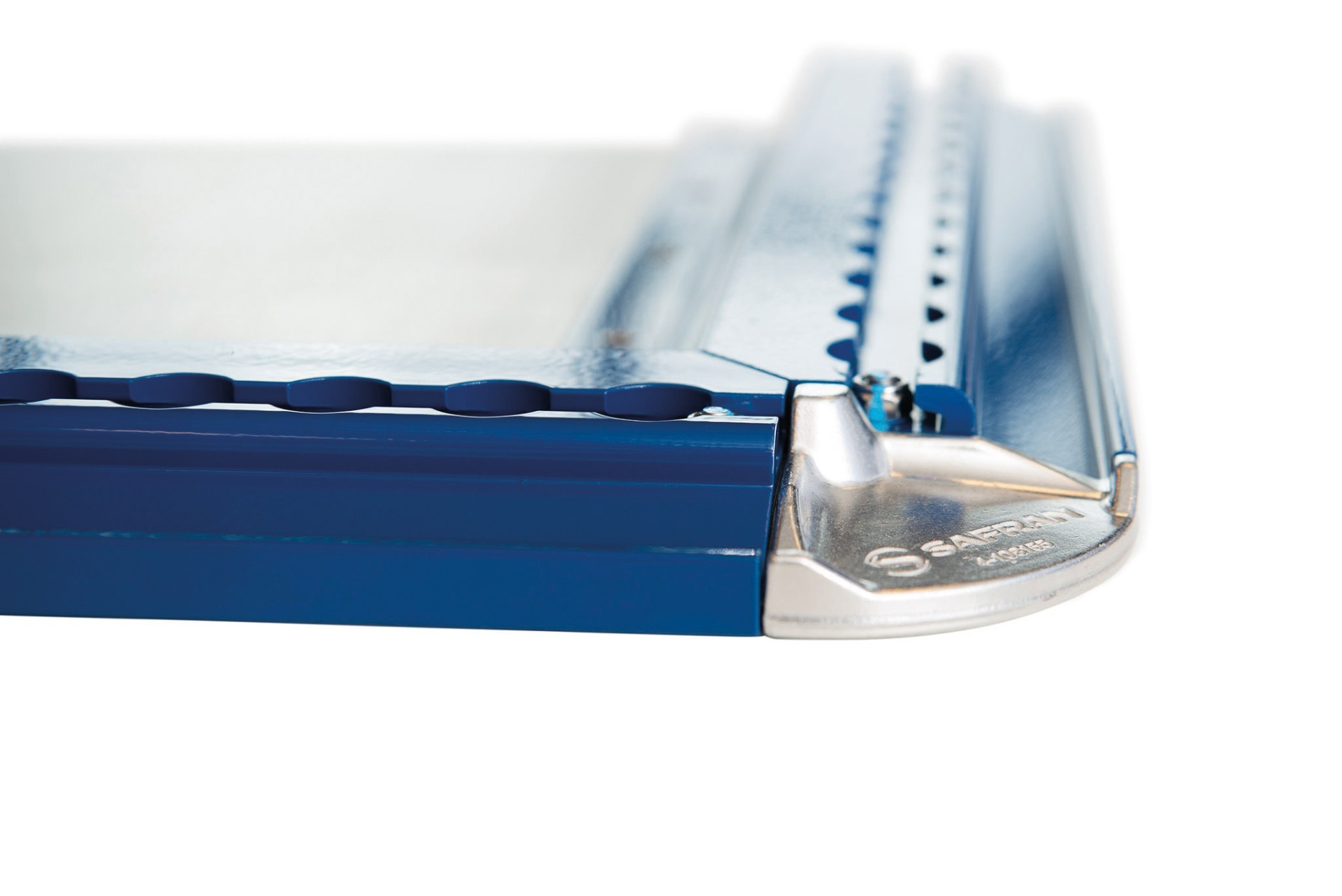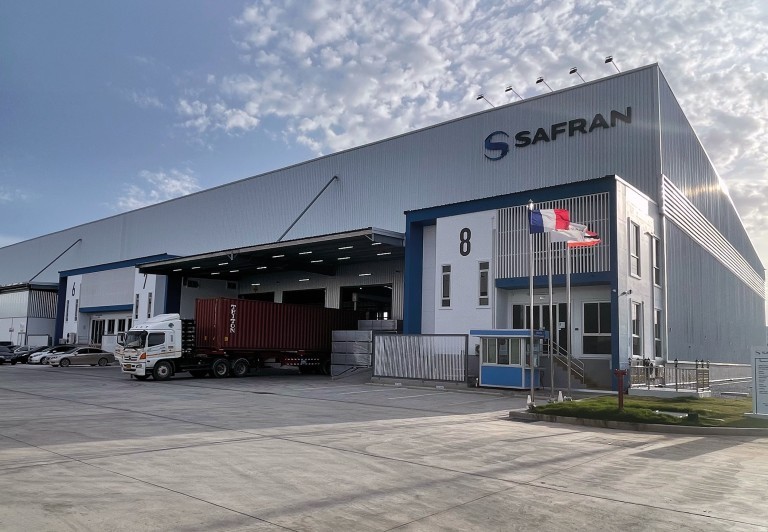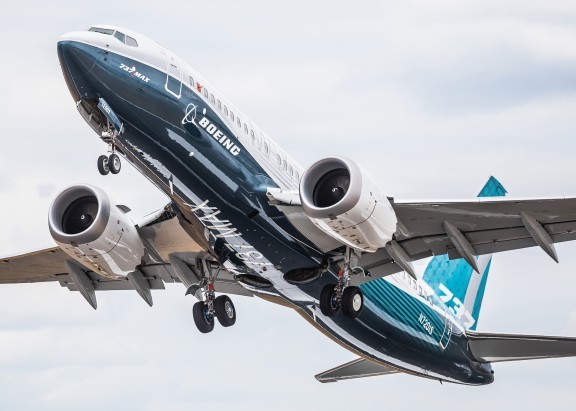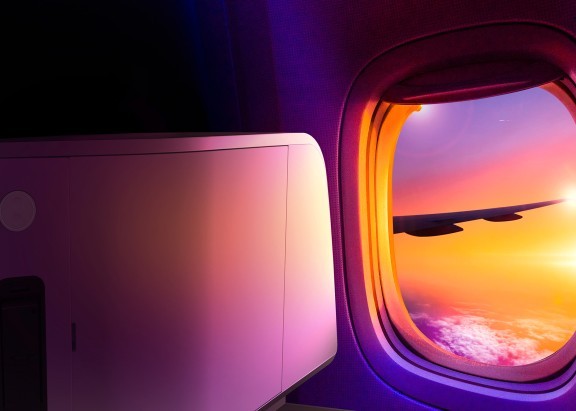
Safran’s weighty ambitions in the air cargo market
With the opening of a brand new plant in Bangkok in early 2021, the Safran Cabin Cargo & Catering division confirms its ambition of becoming a major player in the fast-growing, innovation-centered air cargo market.
Covid-19 was a severe blow for passenger air traffic, but the impact on cargo was much more limited,” notes Pascal Piveteau, Safran Cabin Executive Vice President, Cargo & Catering division. He’s describing the market situation for a business segment recently added by Safran, the design and manufacture of cargo containers and pallets. This is already a key activity, as shown by the recent opening of a new plant in Bangkok, Thailand, in January 2021. “Bangkok is one of our two legacy production centers in Asia, along with Lamphun (northern Thailand), which makes trolleys and inserts for in-flight catering,” explains Klaus Hofmann, Vice President and General Manager of the Cargo & Catering division. “Until now, we had three separate facilities, including a warehouse, which were all becoming obsolete. By grouping our operations under a single roof, we reduced production cycles and simplified our supply chain. In addition, the new building allowed us to considerably improve environmental protection and occupational health and safety.”

The newly improved design of the pallet angles facilitates maintenance, repair and strength.
DIVERSE DEMAND
The whole project came together very quickly. It got a green light in April 2020, and the plant was up and running by December. The new plant is designed to address the diverse needs of the division’s clientele, including airlines, integrators (air freight companies) and pooling companies looking for solutions to maximize cargo capacity on the lower deck (passenger flights) or the main deck (cargo flights). Safran Cabin is already a world leading supplier for passenger cabins, while it only entered the latter segment five years ago, but has already chalked up some impressive wins. “Our customers’ top priorities are on-time delivery, durability, and ease of assembly and maintenance,” explains Jasper Van Gelder, the division’s Sales Manager. “Our Netherlands-based engineering department develops a constant stream of new products, such as foldable containers to make return trips more cost-effective. We also address specific requirements, such as the fire-resistant container technology we developed in 2020 that lets us safely carry lithium- ion batteries. We’re also working on passive refrigeration solutions to maintain low temperatures inside the containers, which may stay grounded for long periods, and we’ve noticed growing interest in integrated tracking technologies.”
“The pandemic grounded a number of passenger flights, but it also spurred a boom in online sales, and consequently in air freight business.”

New Safran Cabin production site in Bangkok, dedicated to the production of pallets and containers.
Safran Cabin in Bangkok
- Before
3 facilities (incl. 1 warehouse),
15,000 square meters. - After
1 facility,
11,400 square meters (2021),
9,850 square meters (2022).
Production capacity up 33%, more eco-efficient shipping & receiving, to save 325 metric tons/year of CO2.
LOOKING FORWARD
Although a world leader in this highly competitive market, Safran is striving to accelerate its development. Pascal Piveteau explains how this growth will depend on diversification: “A lot of airlines would like to have flexible cabin layouts, allowing them to adjust passenger/cargo capacity as needed. However, this raises several issues, both technical (weight distribution is critical on airplanes) and operational: flexibility is only an advantage if you can change the layout quickly, without grounding planes for too long. At the same time, we’ve seen another underlying trend: with the drop in passenger traffic, the cargo business on passenger flights has decreased as well, and planes are flying less often. Our arrival in the dedicated air cargo sector five years ago allowed us to capitalize on this unexpected situation. While the pandemic grounded a number of passenger flights, it also spurred a boom in online sales, and consequently in air freight business.” Safran Cabin has already taken advantage of this trend, signing several new contracts in 2020-2021. “The context is rather favorable,” says Pascal Piveteau. “Furthermore, thanks to our engineering department’s responsiveness and innovative solutions, coupled with our production versatility, we can address our customers’ needs and anticipate their evolving requirements. It’s a constant challenge, but we’re up to the task.”
Find out how Safran Seats is working to help airlines use their aircraft to their maximum capacity
Read more


